Introduction
Of the classical psychedelics, few are as powerful and mysterious as DMT, the principal psychedelic ingredient in the ayahuasca brew.
Famed for its ability to deliver a truly otherworldly experience, indigenous cultures such as the Achuar and Shuar peoples have utilized DMT in various forms as a spiritual tool for at least 1,000 years. More recently, it has become a source of fascination for psychonauts seeking a glimpse into what some believe is another dimension.(1)
Pure DMT delivers a teleportative experience that is perhaps most famously known for its association with what Terence McKenna notoriously deemed “machine elves,” which are purported to reside in another plane of existence. When encountered via the consumption of ayahuasca, these beings are frequently referred to as ancestors, spirits, or gods. Whatever one calls them, science has yet to determine why DMT delivers the experience of meeting such beings, let alone whether or not they’re real. What is certain is that the psychoactive effects can be profoundly transformative.
Whether or not DMT and ayahuasca provide a window into another realm is up for debate, but few who have tried them would argue that they don’t open a window into our individual psyches. As entrepreneur Gerard Armond Powell put it:
Keep Up with Uncensored Psychedelic Trends
Join our newsletter at Psychedelics Uncensored.
We respect and protect your privacy. By subscribing your info will be subject to our privacy policy . Unsubscribe easily at any time
“The scariest part of ayahuasca, the thing that scares us the most, is that we might see ourselves.”
What Is DMT and Ayahuasca?
N,N-Dimethyltryptamine (DMT) is a classic psychedelic, naturally found in both plants and animals. Smoking, vaporizing, or injecting it leads to an intense, short-lasting (roughly 30 minutes) experience with a rapid onset. Most smoked DMT is a synthetic, but structurally identical version of the naturally occurring compound. Notably, consuming DMT orally won’t cause any effects. This is because a type of enzyme in the body, monoamine oxidase (MAO), breaks it down.(2)
However, if you consume DMT with a monoamine oxidase inhibitor (MAOI), you will trip — and have a slower, longer-lasting experience. This type of trip is what traditional ayahuasca achieves. This brew, originating from the Amazon, is made up of leaves from the Psychotria viridis plant, which contains DMT, and the Banisteriopsis caapi vine, which contains MAOIs. Some evidence suggests that pure DMT and ayahuasca may offer relief from mental health issues.(2)
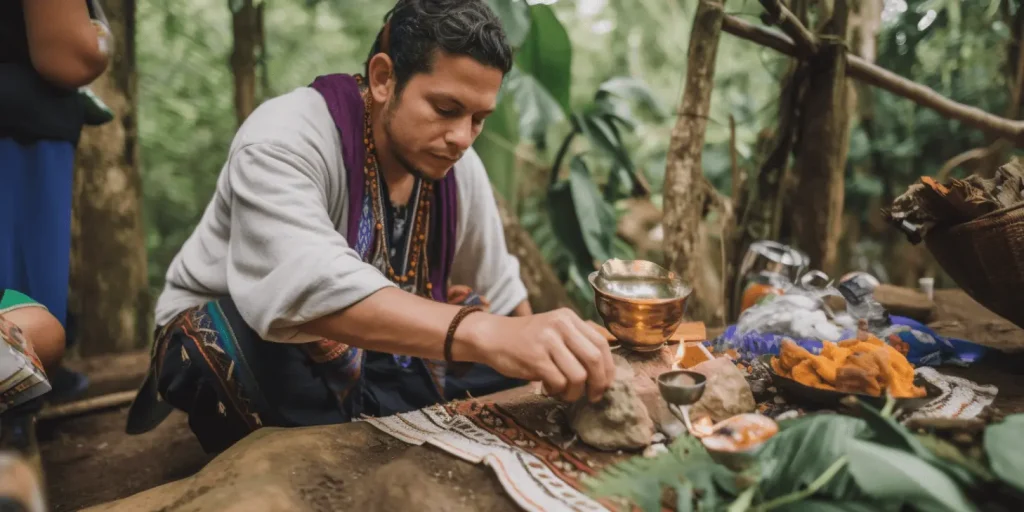
The DMT/Ayahuasca Experience
A somewhat unique aspect of the DMT experience is that you can achieve a “DMT breakthrough” at higher doses. This refers to the sensation of breaking through into another dimension. There may be a feeling of “blasting off,” which many users report as seeming like they are traveling at great speed through tunnels, rooms, cities, or even the universe. A common experience involves meeting what many call “DMT entities,” which can have all sorts of appearances. They’ve been likened to elves, aliens, jesters, insects, deities, and humanoid beings. They are often excited to see and welcome you to their realm and shower you with love, warmth, and comfort.(3, 4, 5, 6, 7, 8)
When you come down from a DMT breakthrough, you may be filled with euphoria and amazement about what you just experienced.
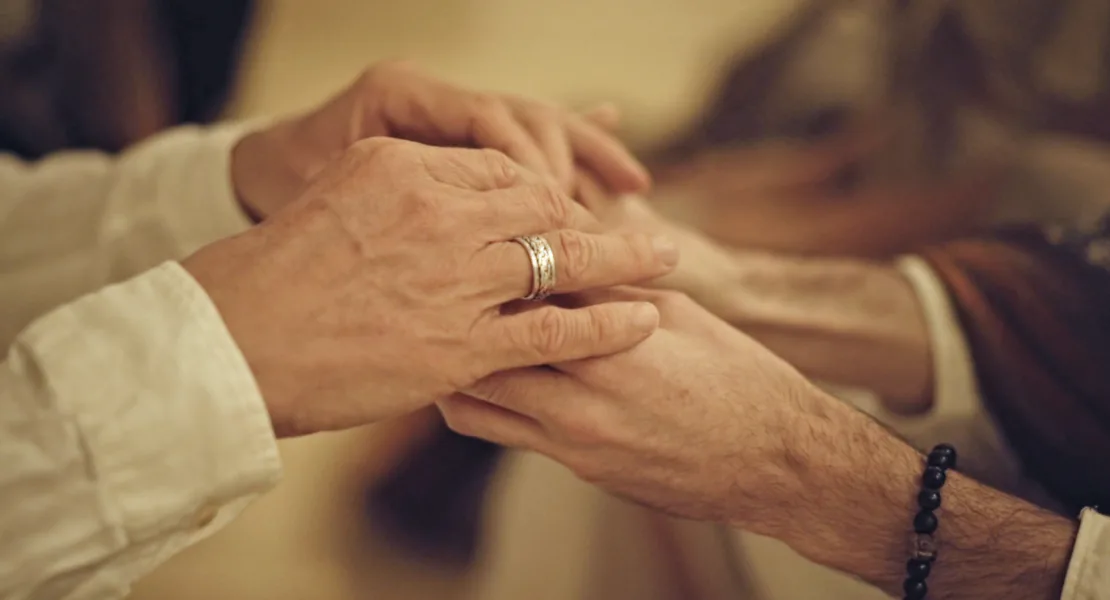
How Is Ayahuasca Different from DMT?
The ayahuasca experience is different from isolated DMT in that it is slower in every respect: come up, peak, and come down. Entities can appear in this experience, too. However, the journey is often more introspective and filled with meaningful visions that may inspire a greater sense of connection with yourself, your family, and those around you. You may also feel a deep sense of oneness with the universe and the spiritual realm after an ayahuasca experience. Environmental themes are also common; some journeyers report seeing and communicating with animals, trees, and plant life.
Studies on DMT and Ayahuasca To Treat Addiction and Depression
Researchers at Yale University have shown that DMT may help reduce depressive symptoms. The company Small Pharma has also been working in collaboration with Imperial College London on a study treating major depressive disorder (MDD) with DMT-assisted psychotherapy using intravenous (IV) injection. Data from the trial is promising, with participants showing a clinically significant reduction in symptoms with a low instance of drug-related adverse effects. The negative effects that were felt only lasted for the duration of treatment.(9, 10, 11, 12, 13, 14, 15, 16)
Keep Up with Psychedelic Trends
Get uncensored psychedelic news, events, and updates. Join Psychedelics Uncensored!
We respect and protect your privacy. By subscribing your info will be subject to our privacy policy . Unsubscribe easily at any time
Research suggests that a single dose of ayahuasca may significantly improve mental health issues like depression, with some patients exhibiting an 82% reduction in symptoms. DMT may also have a great deal of promise for conditions like treatment-resistant depression (TRD) — a condition is considered treatment-resistant when a patient fails to respond to at least two treatment types. In one study, participants showed a 67% response rate vs. a 27% response rate for the control group (who received a placebo).(17)
To go even further, there is some early evidence that the psychedelic experience occasioned by DMT and ayahuasca may help some to recover from addictions to various substances. Other theories suggest that the brew may help people overcome rumination (repetitive, often negative thoughts). The exact causes of these potentially positive outcomes are not yet fully understood. In a paper published in Scientific Reports, researchers note: (18, 19)
“Due to the complex effects of ayahuasca, both pharmacological and psychological, employing an integrated approach involving different disciplines would be necessary to explain its efficacy. It has been observed, for example, that ayahuasca acutely enhances mindfulness-related capacities, such as decentering or acceptance, and psychological process variables, such as personal values, could also be involved in therapeutic outcomes. These capacities seem to be maintained during the afterglow period and also have persistent effects over the long term. Long-term effects may also be associated with the integration of the experience into normal life (e.g., by reconciling unexpressed/unresolved emotional energy) and thus with improvements in psychotherapeutic outcomes. Furthermore, some authors suggest that the psychedelic experience or the mystical-type experiences that psychedelic drugs induce can also explain their therapeutic effects. Finally, as ayahuasca is generally taken in ceremonies for which small or large groups of people gather, its communal use can also be viewed as exerting potential benefits since feeling part of a community can have an important therapeutic impact.”
Are DMT and Ayahuasca Legal?
DMT is a Schedule I drug (a compound added to the highest tier of controlled substances) in the United States. It’s less likely that DMT will be legalized as a medical treatment in the next few years than psilocybin, for example, as the research has been slower. Ayahuasca is also illegal in the U.S. because it contains DMT. However, exceptions have been made in the case of certain religious practices, such as those found in the ayahuasca churches Santo Daime and União do Vegetal (UDV).(20, 21)
Ayahuasca has seen increasing decriminalization efforts across the U.S. — making it easier to access. It is now legal in Colorado, thanks to the passage of Colorado Proposition 122, which legalized natural psychedelics psilocybin, mescaline, ibogaine, and DMT/ayahuasca. The proposal also creates the framework for legal psychedelic-assisted therapy centers, with rules expected to be finalized in 2024.
However, it is important to note that DMT and ayahuasca are still illegal to sell under Colorado State law. As are any of the psychedelics regulated by Proposition 122.
The Ayahuasca Retreat Industry
Ayahuasca is legal in several countries, including Costa Rica, Brazil, Peru, and Ecuador. You can find ayahuasca retreats that range from very basic with few amenities to far more luxurious ones that offer everything from curated meals to yoga and guided meditation. The potent psychedelic brew is also decriminalized in Spain and Portugal.
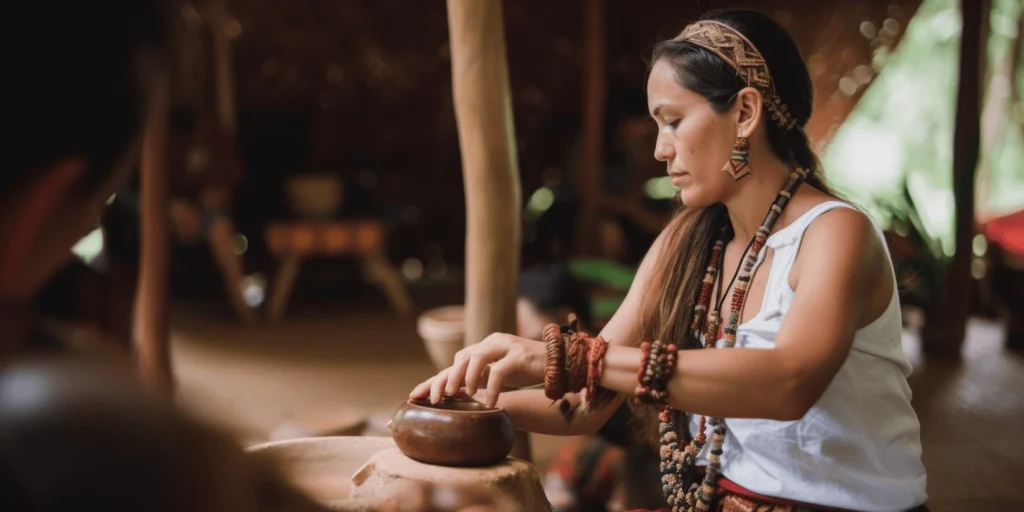
You may also be able to access DMT clinical trials through clinicaltrials.gov. This website tracks all active and recruiting clinical trials in the country. If you’re interested in becoming a participant, you can find trials by searching for conditions or using keywords like DMT. From there, you can contact the trial administrators and request additional information. DMT trials generally require an interview and medical screening.
There are also some potential options for those looking for an ayahuasca experience in the U.S. Ayahuasca has been decriminalized in Oakland, California; Santa Cruz, California; San Francisco, California; Washington, D.C.; Somerville, Massachusetts; and Cambridge, Massachusetts. It has also been legalized for adult use in Oregon and Colorado (as mentioned) for those 21 and up. You should keep in mind that these legal changes are evolving, and decriminalized does not mean legal. Ensure you know the legal status of ayahuasca in your retreat’s jurisdiction before signing up.(22, 23, 24, 25, 26, 27)
You will also want to ensure that it is well-reviewed and led by reputable and experienced facilitators. In addition, respecting traditional practices is important, especially if indigenous community members lead the experience. Indigenous psychedelic practices have taken hundreds and sometimes thousands of years to develop. One should always cherish and acknowledge this sharing of knowledge and resources, while reciprocating and giving back to your host and community.
With psychedelic healing centers and retreats becoming increasingly popular, it is a good idea to ready yourself with the knowledge you need to have the best possible experience. Nick Hilden discusses psychedelictravel and business in The Rise of Psychedelic Tourism.
The Risks and Side Effects of DMT and Ayahuasca
As with other psychoactive drugs, DMT and ayahuasca do carry some risks. Fortunately, DMT has no lasting physical side effects, so there are fewer worries about it causing damage to your body than with other drugs like amphetamines, opioids, and even some prescription medications. However, if you’re taking a high dose, it’s best to have a sitter or experienced guide on hand to look after your physical safety and emotional well-being. Vomiting and diarrhea are possible at these doses, which could make it difficult for you to be active or move around. In fact, with ayahuasca, vomiting is likely (this experience is also known as la purga or “the purge”).(28, 29)
In his latest book, The Psychedelic Handbook (2022), legendary DMT researcher Rick Strassman writes that “daily dosing of classical psychedelics abolishes their effects, so compulsive daily use does not occur. An exception is that tolerance to DMT – and probably 5-methoxy-DMT [5-MeO-DMT] – does not develop with repeated administration, so out-of-control use, while infrequent, does occur.”
Side effects of DMT may include:
The side effects of DMT typically last for the duration of the experience, which could be 20-30 minutes when smoked.(30, 31)
The safety profile of ayahuasca is similar to that of DMT. The addition of MAOIs does not appear to carry any physical or psychological dangers. Negative psychological reactions to ayahuasca do occur, however, which may persist after the experience. These can often be resolved with time, psychological support, and integration (making sense of the experience and drawing value from it).
Ayahuasca’s side effects may include:
In traditional South American ayahuasca ceremonies, this “purge” is considered to be an important part of the physical and psychological experience.(32, 33)
“Especially with ayahuasca, it’s very important to understand how it’s been used traditionally by native peoples in the Amazon basin. The use of ayahuasca has also been utilized by syncretic churches, particularly in Brazil, which have also established themselves in this country. From our studies and my observations, I felt ayahuasca is far more safely contained and far more likely to be effective in regards to its potential antidepressant effects or overall psychological wellbeing effects if contained within a highly structured context.”
The Spiritual and Consciousness-Raising Impact of DMT and Ayahuasca
DMT — particularly in the form of ayahuasca — is often reported to be associated with spirituality and consciousness expansion. In the case of DMT by itself, as mentioned, users frequently report that they sense they have “travelled” to what is presumed to be another dimension that is “more real than reality” — which dramatically impacts how they view existence. Many come away from it with the conviction that there is a higher plane of existence inhabited by beings that some consider godlike or divine. At the very least, it prompts users to question their conceptions of reality.(34)
One of the world’s leading DMT researchers, Dr. Rick Strassman, has long
proposed a theory that connects the development of modern human
consciousness and language with the use of DMT. In our interview with Dr. Strassman, he discusses the potential biological mechanism behind the DMT experience.
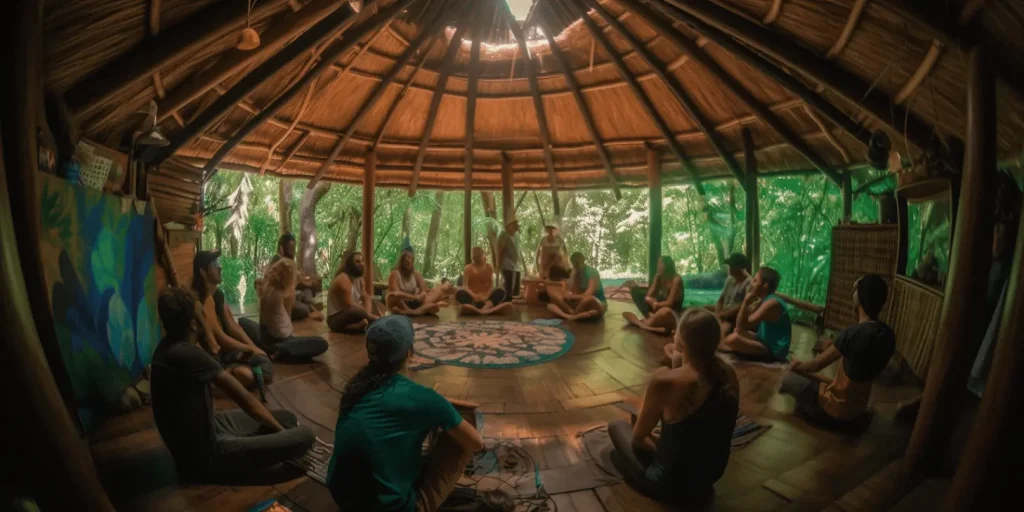
With ayahuasca, the spiritual experience is well-documented. Evidence shows that ayahuasca has been used in religious rituals for at least 1,000 years. These ceremonies are performed for various individual and collective purposes — from purifying the self or the group, to solving a spiritual crises, to communicating with deceased ancestors, or even distant, living relatives.(35)
More recently, ayahuasca ceremonies have traveled all over the world, with various spiritual and medicinal intentions — from treating addiction, to personal growth, to healing traumas. These users frequently assert that the experience provides a uniquely cosmic perspective that can affect one’s sense of self and existence in profoundly life-altering ways.(36, 37)
Getting Ready To Journey with Ayahuasca or DMT
The most common way to ingest DMT on its own is via vaping. It is a short, less demanding process with few material demands. It is important to be in a place where you are comfortable and safe. The experience renders you briefly incapacitated, so you must be seated someplace where you won’t fall and injure yourself. In many cases, this can be accomplished by simply kicking back on the couch.
On the other hand, Ayahuasca delivers a much longer experience that tends to be physically and mentally taxing. While the most dramatic portion of the journey typically lasts for only an hour or so, some facilitators recommend taking a second, and later even a third, dose as the initial doses begin to wane, thereby prolonging and intensifying the experience. Ultimately, the ceremonies can last anywhere from eight to 24 hours. Mental and material readiness — commonly referred to as the “set and setting” — is key. This means, readying your mindset and physical environment to facilitate a positive experience.
Most facilitators suggest that you prepare your “set” in the following ways:
In terms of the diet, The Church of Mother Earth, for example, advises that you do not ingest any animal products at all for several days. It is also recommended that you avoid foods like pork, garlic, onions, spinach, and leeks, overripe bananas and avocados, as well as pickled or fermented foods. It’s particularly important to avoid foods that will be impacted by the MAOI. These can cause issues with the brew, and prevent you from gaining the full benefits of the ayahuasca. These foods may also make the purgative effects of the medicine even more potent, which in turn, may make you feel sicker.(39)
Furthermore, it is suggested that you begin your diet at least three to five days beforehand, and that what you eat is relatively healthy — with an emphasis on whole foods like fruits, vegetables, and grains sans most spices and salt. In other words, a bland, vegan diet. Each facilitator or retreat will have their own recommendations, and you should follow the guidance of your (trusted and vetted) guide. Ayahuasca preparation is often known as the “dieta” and can be rigorous, with some retreats requesting up to three months of preparation. Though, most encourage you stay on the diet for about a week before and after your journey.(40)
As for your “setting,” this will usually be arranged by the retreat you’ve selected.
If you’re interested in learning more about how to prepare for an ayahuasca or DMT trip, check out our psychedelic podcasts and our article on 10 Tips for a Positive Psychedelic Experience.
Essential considerations include:
What To Know During the DMT or Ayahuasca Journey
In the case of DMT, the entire experience will only last between 5-15 minutes, and it will progress something like this:
- You inhale three strong, shortly interspersed puffs from a vaporizer. During the first, your body will tingle a bit. After the second puff, reality as you know it will begin to appear as if it is falling away. Some people become concerned at this point and choose not to take the final puff. Inhaling a third time provides the true DMT experience.
- Many people describe what follows as “rocketing” out of our reality. Some people feel like they are dying (they’re not). Whatever one calls it, it is an extreme, rapid shift from a normal sense of awareness to another.
- At this point, you will appear to be propelled into a completely different reality composed of an ever-shifting kaleidoscope of fractalized architecture. Some people describe flying or moving through a tunnel, hallway, or room. During this period, you will be almost entirely unaware of your physical body, and may be unable to move.
- People report different levels of control over their ability to navigate the DMT space. Some are fully capable of directing themselves at will, while others feel as if they are drawn along a preordained route.
- Upon arrival, you may encounter, and sometimes even communicate with, “beings” that people have described by many names, such as “machine elves”, “aliens”, “gods”, and “fairies.” These can appear as vague forms of light or energy, clearly defined physical bodies and faces, or even shadows. Most DMT users have positive perceptions of these beings, describing them as conscious, benevolent, and intelligent “guides” or “helpers.” Occasionally they are perceived as negative. One research study showed that individuals rated their experience with DMT as among the most meaningful in their life.(41)
- Many describe the experience of visiting the DMT space positively, feeling emotions of joy, trust, surprise, and love.
- Most report that they have received some sort of message or mission from the beings, though they often have difficulty putting it into words.
- While the time in the DMT space may feel indeterminate, after roughly 10 minutes, you will begin to feel that reality fades. You may feel a sense of “leaving” or “flying” away from it.
- You will return to your normal awareness very suddenly. Your body may feel tingly and shaky for 15-30 minutes, but for all practical purposes, you will return to baseline within 30-60 minutes.
The Ayahuasca Experience
The ayahuasca experience is somewhat similar, though significantly more drawn out. The specifics of how your ayahuasca ceremony progresses will vary depending on the retreat, facilitator, and even country you’re in.(42)
- After drinking the ayahuasca, you typically won’t feel much for 20 minutes or so. You will then experience a gradual dissociation from your body.
- You may become extremely nauseous to the point of vomiting. This is very common and, in some cultures, is considered essential to the process.
- Once the effects begin in earnest, it may be a good idea to lie down. (Though some facilitators may request that you try to sit in meditation.) From there, it’s difficult to forecast what will happen. Some people undergo elaborate interior journeys through fractalized landscapes. Others find themselves flying through space or time. Others still experience a return to early childhood, or even the womb.
- You may encounter entities in various forms, though they tend to differ from those experienced during pure DMT. For many, ayahuasca entities often feel more grounded in our reality — like spirits of ancestors or gods that are more directly linked to our universe. These may appear as physical beings, shadows, vague beings of energy, or in various other forms. Sometimes they communicate with you directly. Often journeyers will report communicating with Grandmother or Mother Aya — the spirit of the medicine itself.
- With higher doses, you may experience a sense of “oneness” or nonduality, much like with LSD or psilocybin. Unlike DMT — which sends you to a different reality — ayahuasca may put you in full contact with the expanse of our universe.
- It is often difficult to move with coordination during the peak or plateau of ayahuasca, though not impossible. However, movement can break you out of the experience and make it difficult to resume.
- Knowledgeable facilitators know when the first dose begins to wear off and will typically offer a second dose at some point. Sometimes a third. This is optional, though some find it necessary to fully “break through.”
- The strongest part of the experience will last anywhere from 60-120 minutes.
- Once the effects begin to wane, your normal physical capacities will return rapidly, though your mind may remain highly reflective for another one to four hours.(42)
- The effects do not usually subside completely until you sleep.
The mental experience can sometimes be quite rigorous and even frightening, to the point where you fear that you’re having the much-maligned “bad trip.” Users sometimes report that the experience of a challenging trip can provide potentially life-changing wisdom. This can be where some of the most essential “work” is performed as you confront traumas, fears, and other negative issues. That said, it is possible to have a decentering experience, where a lot of support is needed post-journey. It is essential to seek help when and where it is required, and to enter into these experiences with great care and consideration.
Anecdotal and community sources indicate that bad trips with pure DMT are fairly rare, but with ayahuasca, they can arise either due to improper set and setting or because you’re encountering something psychologically or spiritually difficult. It may even be recommended that you “go into the shadow” to work with this plant medicine and see what it wants to show you. A skilled facilitator or guide will know how to help support you through these challenges, but there are several things you can do to alleviate the situation — or learn from it. Again, you also may need additional support after the journey.
Tips for Your DMT and Ayahuasca Experience: Essential considerations include:
Integrating Your Ayahuasca or DMT Journey
Once the journey has concluded, it’s time for you to integrate. Integration means looking at and analyzing your experience to see what you can learn. What are some key insights that arose? How can you take those and make them a part of your life and consciousness after reviewing them? This is where the life-changing magic happens. Which is why many retreats will have one integration session directly following the journey and another the morning after. In any event, you should find a way to integrate both immediately following the journey, and often, for some time afterwards.
Integrationcomes in a near endless variety of forms, but a few common techniques include:
- Talking with a counselor or guide familiar with ayahuasca or DMT.
- Follow-up therapy or counseling to work through some of the insights you gained.
- Participating in traditional ceremonial practices.
- Talking with your facilitator, family, or friends.
- Journaling.
- Creating art that reflects what you felt and saw.
- Meditating on the event.
- Creating your own daily rituals that help you carry over lessons learned.
- Listening for the one to three key insights you gained, and finding ways to bring them into your daily life. Were you able to see that a past “mistake” (that you tend to lament) was actually a blessing? Remind yourself of this gift of wisdom whenever you’re tempted to ruminate on that event going forward.
Whatever your chosen integration techniques, this is your time to explore the manifold wisdom imparted from DMT or Mother Aya’s lessons.
Sources

1. Cultural Context and the Beneficial Applications of Ayahuasca. (n.d.). Www.lakeforest.edu. https://www.lakeforest.edu/news/cultural-context-and-the-beneficial-applications-of-ayahuasca
2. Gallimore, A. R., & Strassman, R. J. (2016, June 30). A model for the application of target-controlled intravenous infusion for a prolonged immersive DMT psychedelic experience. Frontiers. Retrieved March 23, 2023, from https://www.frontiersin.org/articles/10.3389/fphar.2016.00211/full
3. Yale study of DMT for depression is encouraging. (n.d.). Freethink. Retrieved March 23, 2023, from https://www.freethink.com/health/dmt-depression
4. Adams, B. (n.d.). Small Pharma’s Patented Injectable DMT Formulations Could Help Battle Depression. Forbes. Retrieved March 23, 2023, from https://www.forbes.com/sites/benjaminadams/2022/08/17/small-pharmas-patented-injectable-dmt-formulation-could-help-battle-depression/?sh=7c24ad0d641a
5. Bouso, J. C., González, D., Fondevila, S., Cutchet, M., Fernández, X., Ribeiro Barbosa, P. C., Alcázar-Córcoles, M. Á., Araújo, W. S., Barbanoj, M. J., Fábregas, J. M., & Riba, J. (2012). Personality, Psychopathology, Life Attitudes and Neuropsychological Performance among Ritual Users of Ayahuasca: A Longitudinal Study. PLoS ONE, 7(8), e42421. https://doi.org/10.1371/journal.pone.0042421
6. Aaron, R. V., Blain, S. D., Snodgress, M. A., & Park, S. (2020). Quadratic Relationship Between Alexithymia and Interoceptive Accuracy, and Results From a Pilot Mindfulness Intervention. Frontiers in Psychiatry, 11. https://doi.org/10.3389/fpsyt.2020.00132
7. Pinching, J. (2022, February 24). Data from first DMT-assisted clinical trial revealed. PharmaTimes. https://www.pharmatimes.com/news/data_from_first_dmt-assisted_clinical_trial_revealed_1388171
8. Osório, F. de L., Sanches, R. F., Macedo, L. R., dos Santos, R. G., Maia-de-Oliveira, J. P., Wichert-Ana, L., de Araujo, D. B., Riba, J., Crippa, J. A., & Hallak, J. E. (2015). Antidepressant effects of a single dose of ayahuasca in patients with recurrent depression: a preliminary report. Revista Brasileira de Psiquiatria, 37(1), 13–20. https://doi.org/10.1590/1516-4446-2014-1496
9. Thomas, G., Lucas, P., Capler, N., Tupper, K., & Martin, G. (2013). Ayahuasca-Assisted Therapy for Addiction: Results from a Preliminary Observational Study in Canada. Current Drug Abuse Reviews, 6(1), 30–42. https://doi.org/10.2174/15733998113099990003
10. Jiménez-Garrido, D. F., Gómez-Sousa, M., Ona, G., Dos Santos, R. G., Hallak, J. E. C., Alcázar-Córcoles, M. Á., & Bouso, J. C. (2020). Effects of ayahuasca on mental health and quality of life in naïve users: A longitudinal and cross-sectional study combination. Scientific Reports, 10(1). https://doi.org/10.1038/s41598-020-61169-x
11. Labate, B. C., & Pacheco, G. M. (n.d.). The historical origins of santo daime: Academics, adepts, and ideology. ResearchGate. Retrieved March 23, 2023, from https://www.researchgate.net/publication/314404578_The_historical_origins_of_Santo_Daime_Academics_adepts_and_ideology
12. Labate, B. C. (2011, August 25). Paradoxes of ayahuasca expansion: The UDV–dea agreement and the limits of freedom of religion. Taylor & Francis. Retrieved March 23, 2023, from https://www.tandfonline.com/doi/full/10.3109/09687637.2011.606397
13. Naftulin, J. (n.d.). A major San Francisco Bay Area city just decriminalized magic mushrooms and ayahuasca. Insider. Retrieved March 23, 2023, from https://www.insider.com/oakland-california-vote-to-decriminalize-psychedelic-drugs-2019-6
14. Perel, L. (2020, March 2). Santa Cruz has decriminalized magic mushrooms, ayahuasca, and peyote. KCRW. https://www.kcrw.com/news/shows/kcrw-features/magic-mushrooms-decriminalization
15. Cameron, L. P., Benson, C. J., Dunplap, L. E., & Orson, D. E. (2017, April 17). Effects of N, N-dimethyltryptamine on rat behaviors relevant to anxiety and depression. ACS chemical neuroscience. Retrieved March 30, 2023, from https://pubmed.ncbi.nlm.nih.gov/29664276/
16. Sottile, Z. (2022, September 10). San Francisco takes one step closer to decriminalizing plant-based psychedelics. CNN. https://edition.cnn.com/2022/09/10/us/san-francisco-decriminalization-psychedelics-trnd/index.html
17. Magic Mushrooms, Ayahuasca, and Mescaline Decriminalized in Washington. (2021, March 16). Newsweek. https://www.newsweek.com/dc-initiative-81-psychedelics-magic-mushrooms-decriminalized-1576502
18. Riba, J., Valle, M., Urbano, G., Yritia, M., Morte, A., & Barbanoj, M. J. (2003). Human Pharmacology of Ayahuasca: Subjective and Cardiovascular Effects, Monoamine Metabolite Excretion, and Pharmacokinetics. Journal of Pharmacology and Experimental Therapeutics, 306(1), 73–83. https://doi.org/10.1124/jpet.103.049882
19. Riba J, Valle M, Urbano G, Yritia M, Morte A, Barbanoj MJ. Human Pharmacology of Ayahuasca: Subjective and Cardiovascular Effects, Monoamine Metabolite Excretion, and Pharmacokinetics. Journal of Pharmacology and Experimental Therapeutics. 2003;306(1):73-83.
20. Halberstadt, Albert L., and Charles S. Grob. “Human Pharmacology of Ayahuasca: Subjective and Cardiovascular Effects, Monoamine Metabolite Excretion, and Pharmacokinetics.” Journal of Pharmacology and Experimental Therapeutics, vol. 360, no. 3, 2014, pp. 634–42., doi:10.1124/jpet.114.216946.
21. Hoffman, Y., & Shrira, A. (2019). Variables Connecting Parental PTSD to Offspring Successful Aging: Parent–Child Role Reversal, Secondary Traumatization, and Depressive Symptoms. Frontiers in Psychiatry, 10. https://doi.org/10.3389/fpsyt.2019.00718
22. Johnson, Matthew W., Thomas B. Roberts, and Anthony P. Bossis. “Human Hallucinogen Research: Guidelines for Safety.” Journal of Psychopharmacology, vol. 28, no. 3, 2014, pp. 183–92., doi:10.1177/0269881114524953.
23. Halpern, John H., and Harrison G. Pope. “Hallucinogen Persisting Perception Disorder: What Do We Know after 50 Years?” Drug and Alcohol Dependence, vol. 83, no. 3, 2006, pp. 157–68., doi:10.1016/j.drugalcdep.2005.12.011.
24. Halberstadt, Albert L., and Charles S. Grob. “Human Pharmacology of Ayahuasca: Subjective and Cardiovascular Effects, Monoamine Metabolite Excretion, and Pharmacokinetics.” Journal of Pharmacology and Experimental Therapeutics, vol. 360, no. 3, 2014, pp. 634–42., doi:10.1124/jpet.114.216946.
25. Riba J, Valle M, Urbano G, Yritia M, Morte A, Barbanoj MJ.Human Pharmacology of Ayahuasca
26. Margolin, M. (2021, January 15). Breaking: Somerville, Massachusetts Decriminalizes Naturally Occurring Psychedelics. DoubleBlind Mag. https://doubleblindmag.com/somerville-massachusetts-decriminalize-nature/
27. Oliveira, F. R., de Mello, D. N., de Mello, L. F., de Souza, M. C. & de Andrade, J. C. (2010). Ayahuasca: pharmacology, neuroscience and therapeutic potential. Brain research bulletin, 81(2), 89-101.
28. dos Santos, R. G., Osório, F. L., Crippa, J. A. S., Riba, J., Zuardi, A. W., & Hallak, J. E. (2016). Antidepressive, anxiolytic, and antiaddictive effects of ayahuasca: a systematic literature review of animal and human studies. Therapeutic advances in psychopharmacology, 6(4), 193-213. 25. Rasmussen, N., & Gable, R. (2007). Risk assessment of ritual use of oral dimethyltryptamine (DMT) and harmala alkaloids. Journal of psychoactive drugs, 39(2), 125-133.
29. Barbosa, P. C., Giglio, J. S., & Strassman, R. J. (2005). A critical review of reports of adverse human reactions to ayahuasca. International Journal of Drug Policy, 16(2), 73-81.
30. Neves, E. S., Oberlaender, G.,… & Strassman, R. J. (1996). Human psychopharmacology of hoasca, a plant hallucinogen used in ritual context in Brazil. The Journal of Nervous and Mental Disease, 184(2), 86-94
31. Grob, C. S., McKenna, D. J., Callaway, J. C., Brito, G. S., Neves, E. S., Oberlaender, G.,… & Strassman, R. J. (1996). Human psychopharmacology of hoasca, a plant hallucinogen used in ritual context in Brazil. The Journal of Nervous and Mental Disease, 184(2), 86-94.
32. Mellifont, D. (2021). DMT: It’s Dynamite! A Case Study. Critically Exploring the Contemporary Scholarly Reporting of Dimethyltryptamine-Induced Spiritual Experiences. Australian Journal of Parapsychology, 21(1), 65-90. https://search.informit.org/doi/abs/10.3316/informit.916537241380391
33. dos Santos, R. G., Bouso, J. C., & Hallak, J. E. (2017). Exploring the therapeutic potentials of ayahuasca: acute intake increases mindfulness-related capacities. Psychopharmacology, 234(11), 1793-1802.
34. Nature Communications. (2020). Psychedelic microdosing benefits and challenges: an empirical codebook. https://doi.org/10.1038/s41598-020-61169-x
35. Garcia-Romeu, A., Davis, A. K., Erowid, E., & Griffiths, R. R. (2022). Phenomenology and correlates of mystical-type experiences occasioned by psilocybin microdosing. Journal of Psychoactive Drugs, 54(1), 16-23. https://doi.org/10.1080/02791072.2022.2113484
36. Williams, M., Kingston Miller, A., Loizaga-Velder, A., Files, N., & Lafrance, A. (2022). “Getting to the Root”: Ayahuasca Ceremony Leaders’ Perspectives on Eating Disorders. Journal of Psychoactive Drugs, 1–9. https://doi.org/10.1080/02791072.2022.2113484
37. Ayahuasca Diet | What Foods and Drugs Need to Be Avoided? (n.d.). Soul Herbs. Retrieved March 23, 2023, from https://www.soul-herbs.com/foods-drugs-need-avoided/
38. Callaway, J. C., & Grob, C. S. (1998). Ayahuasca Preparations and Serotonin Reuptake Inhibitors: A Potential Combination for Severe Adverse Interactions. Journal of Psychoactive Drugs, 30(4), 367–369. https://doi.org/10.1080/02791072.1998.10399712
39. NUTRITIONAL GUIDE BEFOFE & AFTER AYAHUASCA CEREMONIES. (n.d.). Retrieved March 23, 2023, from https://ayahuascachurches.secure.retreat.guru/wp-content/uploads/sites/253/2021/01/SQ-DIETA-GUIDE-4.pdf
40. Hartman, S. (2021, February 5). Cambridge Decriminalizes Psychedelics. DoubleBlind Mag. https://doubleblindmag.com/cambridge-decriminalizes-psychedelics/
41. How Long Does Ayahuasca Last? A Look at the Experience. (2019, July 19). Soul Quest Ayahuasca Church of Mother Earth. https://www.ayahuascachurches.org/how-long-does-ayahuasca-last-and-other-important-questions/
42. Ayahuasca: Basic Info | Banisteriopsis caapi | Psycheplants. (2019, February 8). ICEERS. https://www.iceers.org/ayahuasca-basic-info/

 Nick Hilden
Nick Hilden Sam Woolfe
Sam Woolfe David Connell
David Connell Paloma Lehfeldt, MD
Paloma Lehfeldt, MD
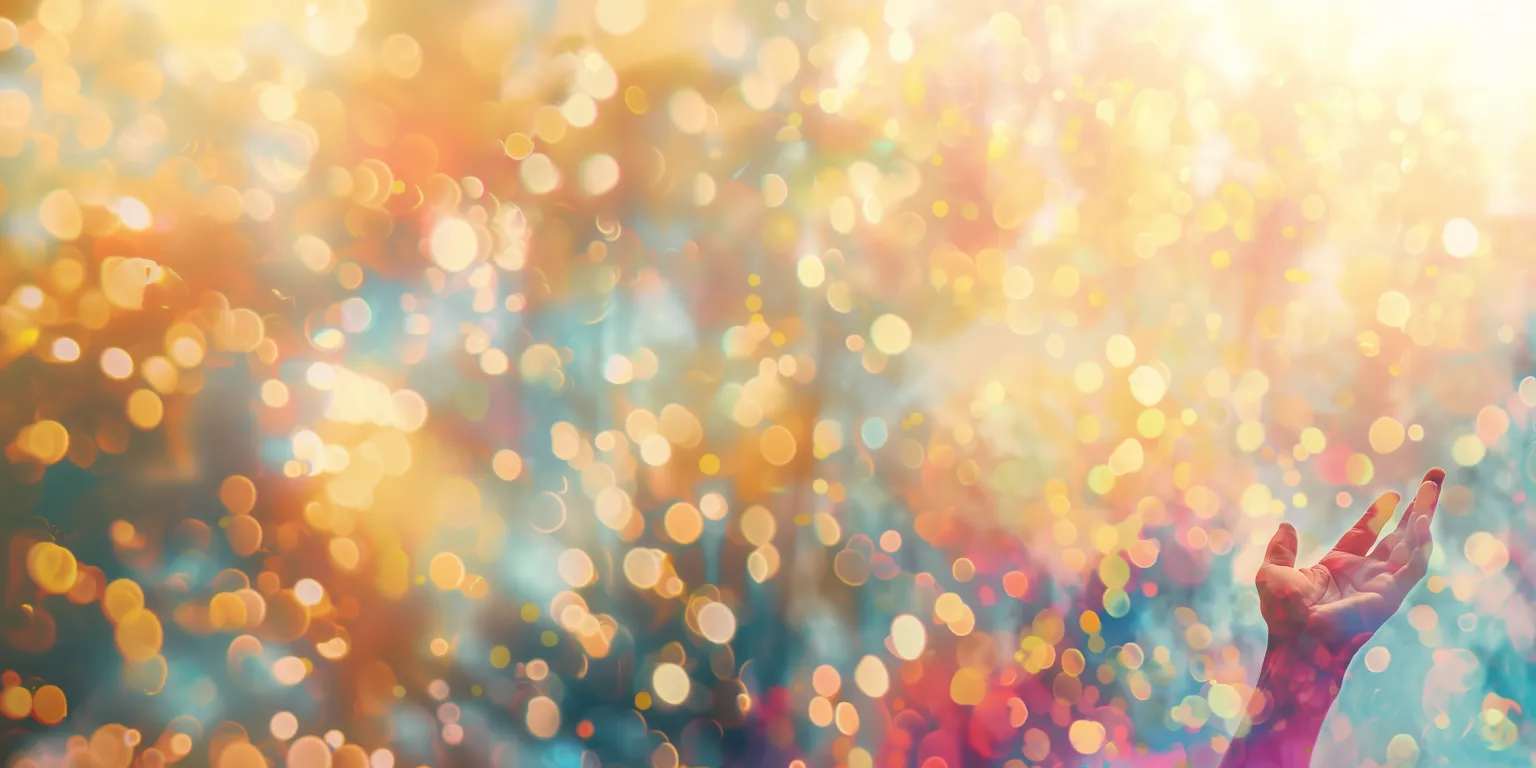




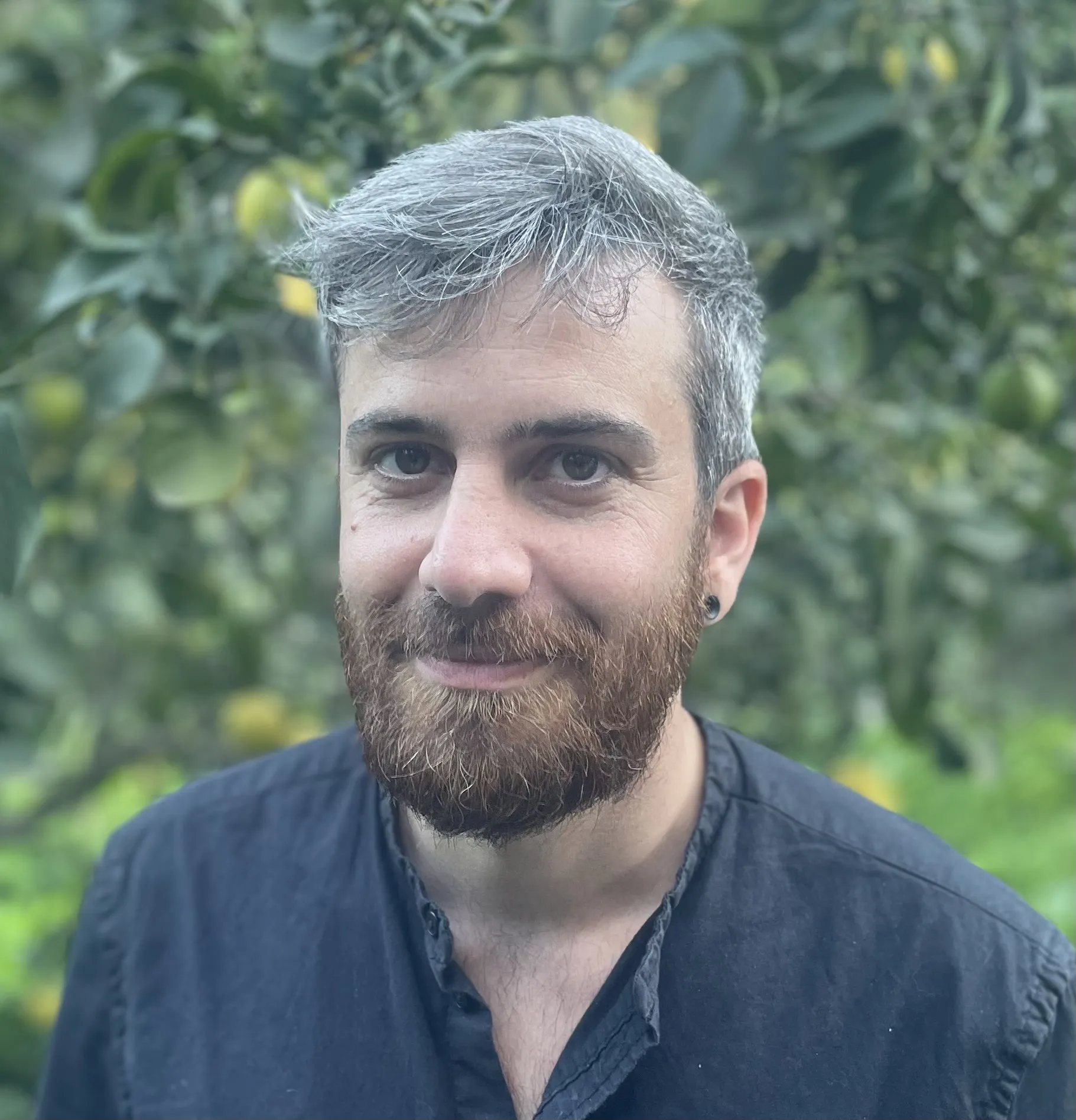 Nir Tadmor
Nir Tadmor Ben “Doc” Askins
Ben “Doc” Askins Sofie Mikhaylova
Sofie Mikhaylova Edmund Murphy
Edmund Murphy



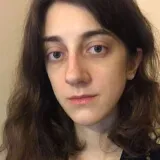 Lauren Smith
Lauren Smith
